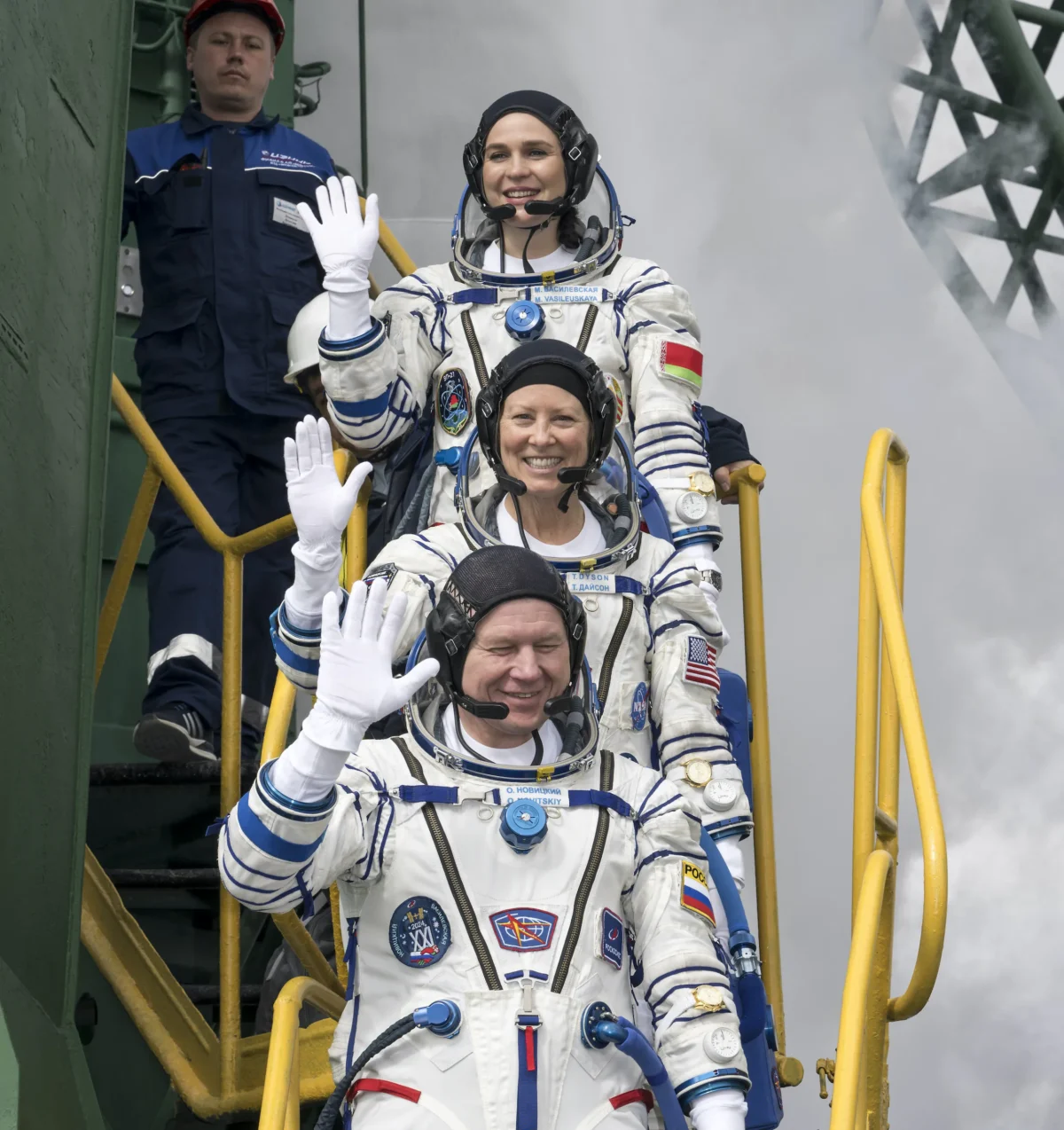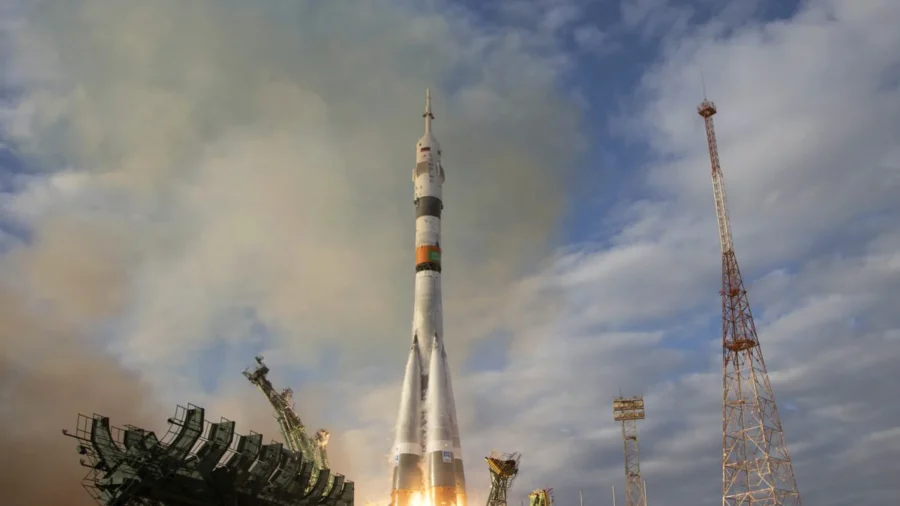Russia landed three astronauts on the International Space Station on March 25 after two failed attempts.
NASA astronaut Tracy Dyson, Russian Oleg Novitsky, and Belarusian Marina Vasilevskaya were launched from the Russian-leased Baikonur launch facility in Kazakhstan two days earlier. The spacecraft with the three astronauts successfully docked at the International Space Station on March 25.
The launch had been planned for March 21 but it was halted by an automatic safety system about 20 seconds before the scheduled liftoff. The head of the Russian space agency, Yuri Borisov, cited a voltage drop in a power source.
The space capsule atop the rocket separated and went into orbit eight minutes after the launch and began a two-day, 34-orbit trip to the space station. If the launch had gone as scheduled on March 21, the journey would have been much shorter, requiring only two orbits.

The three astronauts joined the station’s crew consisting of NASA astronauts Loral O’Hara, Matthew Dominick, Mike Barratt, and Jeanette Epps, as well as Russians Oleg Kononenko, Nikolai Chub, and Alexander Grebenkin.
Mr. Novitsky, Ms. Vasilevskaya, and Ms. O’Hara are to return to Earth on April 6.
The space station has served as a symbol of post-Cold War international cooperation. NASA and its partners hope to continue operating the orbiting outpost until 2030.
Russia has continued to rely on modified versions of Soviet-designed rockets for commercial satellites as well as crews and cargo to the space station.
In March, a Russian rocket put an Iranian satellite into orbit, a launch that underlined increasingly close cooperation between Moscow and Tehran.
Russia’s state-run Roscosmos corporation said that a Soyuz rocket blasted off from the Vostochny launch facility in the country’s far east carrying the Iranian satellite and 18 Russian satellites.
Iranian state TV said the 110-kilogram (242-pound) satellite has three cameras to take images for environmental, agricultural, and other purposes.
Russia had cooperated with Iran in 2022, putting another Iranian satellite into orbit. Iran itself has a total of 23 launches, according to state officials.
In Japan, a commercial rocket trying to put a satellite into orbit in March was intentionally exploded shortly after liftoff following a problem that’s still under investigation.
Space One was aiming to be Japan’s first private sector success at putting a satellite into orbit.
An online video showed the Kairos rocket blasting off in a mountainous area filled with trees, then exploding five seconds later. A huge plume of smoke engulfed the area, and flames shot up in some spots. Spurts of water were shown trying to put out the blaze.
Live footage on public broadcaster NHK showed debris scattering from the sky and charred pieces strewn on the ground.
No injuries were reported, according to the fire department for Kushimoto city in Wakayama prefecture.
The launch was halted five seconds after liftoff but the problem that was detected by the rocket’s automated system was unclear and still under investigation, according to Space One.
It occurred during step two of the launch, with the first step being liftoff. All the pieces of the rocket landed on Space One’s property, the company said.
India in Space
India is also developing its space mission, with a successful moon landing and a rocket launch with a satellite to study the Sun, both in 2023.
The satellite’s purpose is to study solar winds, which can cause disturbances on Earth and commonly manifest as auroras.
Named after the Hindi word for the sun, the Aditya-L1 spacecraft took flight barely a week after India became the first country to land on the south pole of the moon.
Prime Minister Narendra Modi is pushing for India’s space missions to play a larger role on a world stage dominated by the United States and China. Home Affairs Minister Amit Shah, on social media platform X, said the launch was a “giant step” toward Mr. Modi’s vision.
The Aditya-L1 is designed to travel 1.5 million km (930,000 miles) over four months, far short of the sun, which is 150 million km from earth.
It is meant to stop its journey in a kind of parking lot in space, called a Lagrange Point, where objects tend to stay put because of balancing gravitational forces, reducing fuel consumption for the spacecraft.
India aims to get data not available from any other mission.
Scientists hope to learn more about the effect of solar radiation on the thousands of satellites in orbit, a number growing with the success of ventures like the Starlink communications network of Elon Musk’s SpaceX.
Longer term, data from the mission could help scientists better understand the sun’s impact on earth’s climate patterns and the origins of solar wind, the stream of particles that flow from the sun through the solar system, Indian Space Research Organisation scientists have said.
Pushed by Mr. Modi, India has privatized space launches and is looking to open the sector to foreign investment as it targets a five-fold increase in its share of the global launch market within the next decade.
The Associated Press and Reuters contributed to this report.

